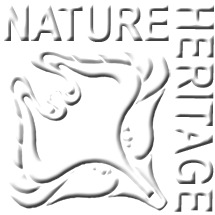Food and livelihoods in communities adjacent to a National Park in the Republic of Congo
We gathered information on bushmeat consumption, income, material assets, and hunter perception of the state of wildlife in communities adjacent to the Odzala Kokoua National Park. Our results highlight the possible importance of PAs and adjacent areas as reservoirs of wildlife and in maintaining wild meat resources used by the surrounding human populations.
- Mavah, G.A., Funk, S.M., Child, B., Swisher, M.E., Nasi, R., Fa, J.E., 2018. Food and livelihoods in park-adjacent communities: The case of the Odzala Kokoua National Park. Biological Conservation 222, 44–51.
Highlights
- Protected areas management plans should pay attention to the provision of food and income by adjacent human communities.
- In our study bushmeat was the most important component of meals in nearly all study villages.
- A quarter of households earned cash from hunting wildlife.
- More bushmeat was consumed closer to the national park but income from sales was greater closer to markets.
- Wildlife is perceived as declining around all village groups.
Abstract
Protected areas (PAs) in Central Africa provide unprecedented opportunities to maintain ecosystem integrity and safeguard the unique wildlife of one of the most biodiverse regions in the world. However, conflicts exist between wildlife protection, and the needs of human populations adjacent to PAs. Although the use of wildlife resources within PAs is nominally regulated, wildlife exploitation in the areas surrounding parks benefit human nutrition and livelihoods of adjacent populations.
In 2013–2014, we interviewed 28% of all known households in 37 villages surrounding the Odzala Kokoua National Park (OKNP), Republic of Congo. We gathered information on bushmeat consumption, income, material assets, and hunter perception of the state of wildlife.
We show that bushmeat species (mostly duikers, small monkeys and porcupine) were consumed in 38–48% of meals, and 20–30% of households earned cash from hunting wildlife in most villages; more than any other single source of revenue, except cocoa. Although it remains unknown whether the park was a reservoir for wildlife for areas around the studied villages, we showed that more bushmeat was consumed closer to OKNP. By contrast, income from bushmeat sales in villages closer to markets was greater, and as a corollary, market access and household wealth were positively correlated.
Overall, total household income, income from bushmeat sales, travel time, and distance to the OKNP were good predictors of household wealth. Wildlife, although considered more abundant around villages closest to the park, was perceived as generally declining around all village groups.
Our results highlight the possible importance of PAs and adjacent areas as reservoirs of wildlife and in maintaining wild meat resources used by the surrounding human populations.

